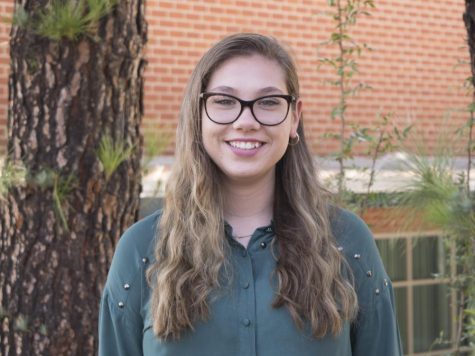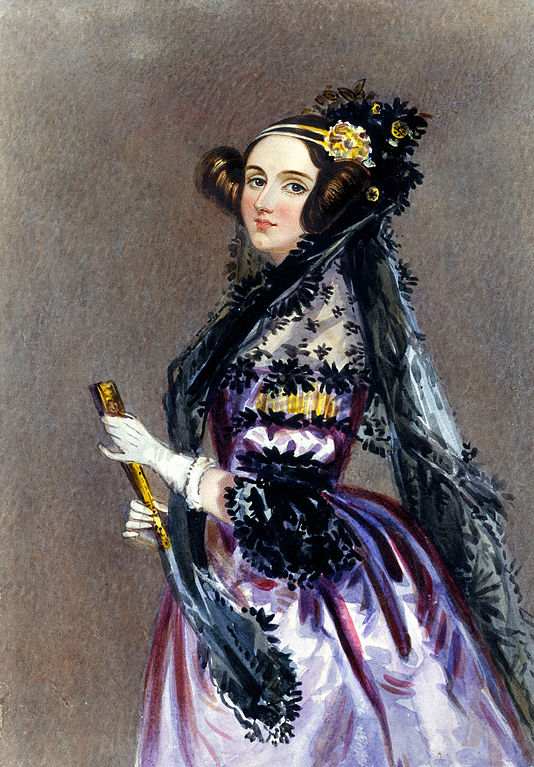The Future is Female
The screens all turned black, then static pierced the room as guest speaker Dr. Margarita Oveian, an acclaimed and passionate neurologist, was discussing strokes, the x-ray scans of hemorrhaged brains fading to nothing on the screens behind her. Yet Clark’s third annual Ada Lovelace Day celebration was saved from disaster as host Fred Blattner swept in to revive the screens as well as the audience, which had quieted down after having erupted into a cacophony of confusion upon gazing at the words “No Signal” for quite some time.
The assembly had begun in the traditional way, with Blattner showing the same “Science in Seconds — Ada Lovelace” video as he has each year, about the life of the first computer programmer and the “enchantress of numbers,” Ada Lovelace. Oct. 10 is now the day to commemorate women’s achievements in STEM, and the two guest speakers this year — Dr. Margarita Oveian and Dr. Emily Kramer — have no shortage of them.
Dr. Oveian discussed how she has always been “fascinated by how our brain controls everything in our body,” and after the brief technological interruption, promptly resumed her talk about the life-saving work she does, asking the rhetorical question “Do I treat the patient or do I treat the family?” Dr. Oveian detailed that part of the healing process occurs not only with the patient but also with their family. The joy that she feels when “looking into a family member’s eyes and saying ‘I can save your brother,’ or ‘I can save your sister’” is unparalleled.
Dr. Oveian wrapped up her presentation by referencing the difficulties of being a woman in her field. “Being physician woman is very hard, but if you have good support, then go for it,” she encouraged.
She then passed the mic to the second guest speaker of the event, astronomer Dr. Emily Kramer. In quick succession, the powerpoint image changed from a chart on strokes, aneurysms and tremors, to a picture of Comet Hale-Bopp. This astrological phenomenon occurred in 1996, and 20 years later, Dr. Kramer began a study concerning it. In her talk, she advocated “nerd pride” when discussing her childhood passions and the road she took to secure a role at the Jet Propulsion Lab.
She also dispensed some invaluable advice: “Take opportunities when they are given to you,” said Dr. Kramer. “And try things out even if you don’t think they’ll work out, because most times they do.”
However, disaster struck once more as the screens turned an all too familiar black, and the notorious “No Signal” lettering popped back up. “Science is all about seeing the problem, testing solutions for the problem, and fixing it,” Dr. Kramer said, effectively silencing the chattering audience.
She disconnected the cable and connected it back again, repairing the lost connection, stating how she observed that was the solution to the problem the previous time, and she put that knowledge to use. “That’s science!” she proclaimed. She then concluded her talk with the consolation that “anyone can be a scientist,” and more importantly, that “NASA’s got your back.”
Their inspirational talk reminded students why women in science should be celebrated and just how important Ada Lovelace day is. “We need a day to celebrate women in STEM because currently there are very few women in engineering. For instance, at my mom’s work — she works at JPL — only 19 percent of the people there are women, which I think is unacceptable. We need to encourage more girls to join,” said junior Brijal Shah.
Students are also hopeful about the future, despite the current bleak aspects. “Because we live in a patriarchal society,” said junior Mavi Verde. “We need to introduce engineering to more women and they can become role models.”

Interest/Hobbies: Reading, sleeping, and avoiding confrontation.
Favorite year in music : 1974
Goals in life: To be happy
Three words...










